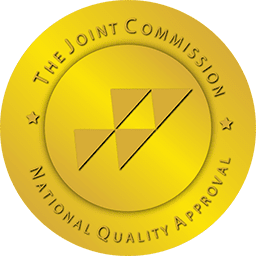Alcohol use disorder (AUD), typically called alcoholism, is a common neurological disorder in which a person becomes psychologically and physically dependent on alcohol even when their alcohol consumption is causing significant problems in their lives. A person with AUD cannot successfully stop drinking or regulate their intake of alcohol sufficiently to eliminate these negative consequences, which are often extreme.
Considered a disorder of the brain, AUD’s severity ranges from mild to severe and leads to changes in how the brain produces and responds to chemical messengers called neurotransmitters. Fortunately, AUD is highly responsive to treatment and responds well to a combination of medical and behavioral therapies.
What causes AUD?
Researchers believe a combination of environmental and genetic factors influence a person’s vulnerability to alcohol use disorder, and external pressures prompt AUD to become active.
What are the risk factors for AUD?
There are numerous biological, psychological, and social risk factors for AUD. Researchers in alcohol addiction have conducted studies showing a strong tendency for alcoholism to be inheritable.
These are the most significant risk factors for AUD:
Genetics
People with at least one parent with AUD are four times more likely to develop AUD than children without an alcoholic parent, even when they are not reared by or around that parent.
Early Alcohol Use
Typically, the earlier people start using alcohol, the greater their risk of developing AUD.
Presence of Other Psychological Conditions
People with depression, anxiety, or bipolar disorder are more likely to become alcoholics due to self-medicating the stresses that arise from these conditions.
Binge Drinking
People with more than 4 or 5 drinks in a two-hour period are at an elevated risk of developing AUD.
Self-Esteem issues
People with low self-esteem or diminished feelings of self-worth are vulnerable to AUD, as are people who drink to bolster their confidence or sociability.
Sustained Stress
People with a lot of stress often use alcohol to unwind and relax. However, it becomes impossible for some people to control stress without drinking, leading to AUD.
Familial, Professional, or Cultural Expectations
People who live in cultures or microcultures where drinking, even drinking to excess, is considered acceptable or even to be expected.
What are the Stages Of AUD?
AUD is a progressive brain disorder with four distinct stages, from the onset of symptoms to the final stage.
- Pre-alcoholism. Pre-alcoholism is sometimes called “problem drinking.” At this stage, a person in pre-alcoholism isn’t using alcohol compulsively. They may use alcohol infrequently, with minor negative outcomes, such as hangovers. People who use alcohol to manage stress, anxiety, and emotions are the most likely to progress to the next stage of alcohol addiction.
- Early alcoholism. Also called prodromal alcoholism, early alcoholism is typified by binge drinking or routinely drinking to excess. At this stage, a person may experience alcohol-induced blackouts. They’re also unable to moderate their drinking. However, in early alcoholism, a person still can compartmentalize their alcohol use, at least to a degree; that is, they will refrain from drinking until after work or until the weekend.
- Middle alcoholism. At this stage, a person will experience frequent cravings for alcohol and may drink at work, school, or other inappropriate settings. Consequences have accumulated, like frequent absenteeism, legal issues (DWI/DUIs), regular hangovers, etc. In middle alcoholism, a person finds themselves drinking more and more to experience the same level of intoxication—or relief—that a much smaller amount of alcohol produced. Changes throughout the body become apparent at this stage, such as abdominal bloating, shakes, sweats, and memory loss.
- Late, or end-stage alcoholism. At this point, consuming alcohol is the center and sole goal of an alcoholic’s life, and no amount of drinking can do more than keep alcohol withdrawal symptoms partially at bay. Because of the high likelihood of developing alcohol withdrawal syndrome, a person must undergo a medical detox program before progressing to inpatient rehab for alcohol use disorder.
What are the negative effects of AUD?
The negative consequences of AUD are endless, ranging from a loss of relationships, job loss, destroyed personal finances, poor health, and eventually, the loss of one’s life. In addition, AUD is a progressive disorder, meaning it always gets worse until a person gets treatment.
Self-Testing: Do I Have an Unhealthy Relationship with Alcohol?
Here are some of the most significant signs of an unhealthy relationship with drinking. Do you:
- Feel like you have to have a drink
- Crave alcohol
- Have trouble controlling how much you drink, or drink more than you intend to
- Keep drinking even when there are negative consequences
- Drive while intoxicated
- Plan your activities around drinking or access to alcohol
- Feel uncomfortable attending activities without access to alcohol
If the answer to any of these questions is yes, you may have an unhealthy relationship with alcohol.
What treatment options are available for AUD?
Many approaches for AUD treatment exist. These are some of the more common approaches to treatment based on the level of care a person needs.
- Inpatient Treatment
- Residential Treatment
- Partial Hospitalization (PHP)
- Intensive Outpatient Treatment (IOP)
- Outpatient Treatment (OP)
When seeking AUD, a person needs to be assessed for any co-occurring disorders. Dual-diagnosis care ensures that both conditions are treated.
If alcohol consumption has led to significant interpersonal consequences, you may be struggling with an alcohol-related disorder. If you are unsure whether inpatient treatment is the best option for you, call us, and we will help you determine what treatment option would benefit your unique case the most. For more information on our program for alcohol addiction recovery in New Jersey, give us a call today.
References
1. Understanding Alcohol Use Disorder | National Institute on Alcohol Abuse and Alcoholism (NIAAA). Accessed January 15, 2023. https://www.niaaa.nih.gov/publications/brochures-and-fact-sheets/understanding-alcohol-use-disorder
2. De Moor M, Vink J, van Beek J, et al. Heritability of Problem Drinking and the Genetic Overlap with Personality in a General Population Sample. Frontiers in Genetics. 2011;2. Accessed January 15, 2023. https://www.frontiersin.org/articles/10.3389/fgene.2011.00076
3. Tarter RE, Edwards K. Psychological Factors Associated with the Risk for Alcoholism. Alcohol: Clinical and Experimental Research. 1988;12(4):471-480. doi:10.1111/j.1530-0277.1988.tb00229.x













